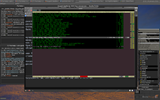Prerequisites
Step 1: Add a Sudo User
Step 2: Update FreeBSD 11 System
Step 3: Install Apache Web Server
Step 4: Install PHP 7.1
Step 5: Install MariaDB (MySQL) Server
Step 6: Create Database for Omeka Classic CMS
Step 7: Install Omeka Classic CMS Files
Step 8: Install ImageMagick
Step 9: Complete Omeka Classic CMS Installation
Omeka Classic 2.4 CMS is a free and open source digital publishing platform and Content Management System (CMS) for sharing digital collections and creating media-rich online exhibits. Omeka Classic 2.4 CMS enables scholars, librarians, archivists, museum professionals and cultural enthusiasts to create complex narratives and share rich collections and content at low cost without sacrificing design and technical quality. Omeka accepts and stores all types of files, including images, video, audio, multi-page documents, PDFs, Power Point presentations; and can handle large archives of metadata and files (with over 1 million items) with the only limitations being the power of your server.
In this tutorial we are going to install Omeka Classic 2.4 CMS on a FreeBSD 11 FAMP VPS using Apache web server, PHP 7.1, and a MariaDB database.
Prerequisites
- A clean Vultr FreeBSD 11 server instance with SSH access
Step 1: Add a Sudo User
We will start by adding a new sudo user.
First, log into your server as root:
ssh root@YOUR_VULTR_IP_ADDRESS
The sudo command isn't installed by default in the Vultr FreeBSD 11 server instance, so we will first install sudo:
pkg install sudo
Now add a new user called user1 (or your preferred username):
adduser user1
The adduser command will prompt you for lots of details for the user account, so simply select the defaults for most of them when it makes sense to do so. When you are asked whether to Invite user1 into any other groups?, you should enter wheel to add user1 to the wheel group.
Now check the /etc/sudoers file to make sure that the sudoers group is enabled:
visudo
Look for a section like this:
# %wheel ALL=(ALL) ALL
This line tells us that users who are members of the wheel group can use the sudo command to gain root privileges. It will be commented out by default so you will need to uncomment it and then save and exit the file.
We can verify the user1 group membership with the groups command:
groups user1
If user1 is not a member of the wheel group, you can use this command to update the user1 group membership:
pw group mod wheel -m user1
Now use the su command to switch to the new sudo user user1 account:
su - user1
The command prompt will update to indicate that you are now logged into the user1 account. You can verify this with the whoami command:
whoami
Now restart the sshd service so that you can login via ssh with the new non-root sudo user account you have just created:
sudo /etc/rc.d/sshd restart
Exit the user1 account:
exit
Exit the root account (which will disconnect your ssh session):
exit
You can now ssh into the server instance from your local host using the new non-root sudo user user1 account:
ssh user1@YOUR_VULTR_IP_ADDRESS
If you want to execute sudo without having to type a password every time, then open the /etc/sudoers file again, using visudo:
sudo visudo
Edit the section for the wheel group so that it looks like this:
%wheel ALL=(ALL) NOPASSWD: ALL
Please note: Disabling the password requirement for the sudo user is not a recommended practice, but it is included here as it can make server configuration much more convenient and less frustrating, especially during longer systems administration sessions. If you are concerned about the security implications, you can always revert the configuration change to the original after you finish your administration tasks.
Whenever you want to log into the root user account from within the sudo user account, you can use one of the following commands:
sudo -i
sudo su -
You can exit the root account and return back to your sudo user account any time by simply typing the following:
exit
Step 2: Update FreeBSD 11 System
Before installing any packages on the FreeBSD server instance, we will first update the system.
Make sure you are logged in to the server using a non-root sudo user and run the following commands:
sudo freebsd-update fetch
sudo freebsd-update install
sudo pkg update
sudo pkg upgrade
Step 3: Install Apache Web Server
Install the Apache web server:
sudo pkg install apache24
Enter y when prompted.
Now use the sysrc command to enable the Apache service to execute automatically at boot time:
sudo sysrc apache24_enable=yes
The sysrc command updates the /etc/rc.conf configuration file, so if you want to verify the configuration update manually you can simply open the /etc/rc.conf file with your favourite terminal editor:
vi /etc/rc.conf
Now start the Apache service:
sudo service apache24 start
You can quickly check that apache is running by visiting the IP address or domain of the server instance in your browser:
http://YOUR_VULTR_IP_ADDRESS/
You will see the default FreeBSD Apache page displaying the text:
It works!
Check your Apache default configuration file to ensure that the DocumentRoot directive points to the correct directory:
sudo vi /usr/local/etc/apache24/httpd.conf
The DocumentRoot configuration option will look like this:
DocumentRoot "/usr/local/www/apache24/data"
We now need to enable the mod_rewrite Apache module. We can do this by searching the default Apache configuration file for the term mod_rewrite.
By default, the mod_rewrite Apache module will be commented out (which means it is disabled). The configuration line on a clean Vultr FreeBSD 11 instance will look like this:
#LoadModule rewrite_module libexec/apache24/mod_rewrite.so
Simply remove the hash symbol to uncomment the line and load the module. This, of course, applies to any other required Apache modules as well:
LoadModule rewrite_module libexec/apache24/mod_rewrite.so
We now need to edit The Directory Apache directive in the same configuration file so that mod_rewrite will work correctly with Omeka Classic CMS.
Find the section of the configuration file that starts with <Directory "/usr/local/www/apache24/data"> and change AllowOverride none to AllowOverride All. The end result (with all comments removed) will look something like this:
<Directory "/var/www/html">
Options Indexes FollowSymLinks
AllowOverride All
Require all granted
</Directory>
Now save and exit the Apache configuration file.
We will restart Apache at the end of this tutorial, but restarting Apache regularly during installation and configuration is certainly a good habit, so let's do it now:
sudo service apache24 restart
Step 4: Install PHP 7.1
We can now install PHP 7.1 along with all of the necessary PHP modules required by Omeka Classic CMS:
sudo pkg install php71 mod_php71 php71-gd php71-mbstring php71-mysqli php71-xml php71-curl php71-ctype php71-tokenizer php71-simplexml php71-dom php71-session php71-iconv php71-hash php71-json php71-fileinfo php71-pdo php71-pdo_mysql php71-zlib php71-openssl php71-zip php71-phar php71-exif
FreeBSD 11 gives us the option to use a development php.ini or a production php.ini. Since we are going to install Omeka Classic on a public web server, we'll use the production version. First, back up php.ini-production:
sudo cp /usr/local/etc/php.ini-production /usr/local/etc/php.ini-production.backup
Then soft-link php.ini-production to php.ini:
sudo ln -s /usr/local/etc/php.ini-production /usr/local/etc/php.ini
We need to configure Apache to actually use PHP, so let's create a new file called php.conf in the Apache Includes directory:
sudo vi /usr/local/etc/apache24/Includes/php.conf
Enter the following text into the newly created file:
<IfModule dir_module>
DirectoryIndex index.php index.html
<FilesMatch "\.php$">
SetHandler application/x-httpd-php
</FilesMatch>
<FilesMatch "\.phps$">
SetHandler application/x-httpd-php-source
</FilesMatch>
</IfModule>
Save and exit the file.
Now let's restart Apache so that it can reload the configuration changes:
sudo service apache24 restart
Step 5: Install MariaDB (MySQL) Server
FreeBSD 11 defaults to using MariaDB database server, which is an enhanced, fully open source, community developed, drop-in replacement for MySQL server.
Install the latest version of MariaDB database server:
sudo pkg install mariadb102-server mariadb102-client
Start and enable MariaDB server to execute automatically at boot time:
sudo sysrc mysql_enable="yes"
sudo service mysql-server start
Secure your MariaDB server installation:
sudo mysql_secure_installation
When prompted to create a MariaDB/MySQL root user, select "Y" (for yes) and then enter a secure root password. Simply answer "Y" to all of the other yes/no questions as the default suggestions are the most secure options.
Step 6: Create Database for Omeka Classic CMS
Log into the MariaDB shell as the MariaDB root user by running the following command:
sudo mysql -u root -p
To access the MariaDB command prompt, simply enter the MariaDB root password when prompted.
Run the following queries to create a MariaDB database and database user for Omeka Classic CMS:
CREATE DATABASE omeka_db CHARACTER SET utf8 COLLATE utf8_general_ci;
CREATE USER 'omeka_user'@'localhost' IDENTIFIED BY 'UltraSecurePassword';
GRANT ALL PRIVILEGES ON omeka_db.* TO 'omeka_user'@'localhost';
FLUSH PRIVILEGES;
EXIT;
You can replace the database name omeka_db and username omeka_user with something more to your liking, if you prefer. Also, make sure that you replace "UltraSecurePassword" with an actually secure password.
Step 7: Install Omeka Classic CMS Files
Change your current working directory to the default web directory:
cd /usr/local/www/apache24/data
Your current working directory will now be: /usr/local/www/apache24/data. You can check this with the pwd (print working directory) command:
pwd
Now use wget to download the Omeka Classic CMS installation package:
sudo wget https://github.com/omeka/Omeka/releases/download/v2.5.1/omeka-2.5.1.zip
Please note: You should definitely check for the most recent version by visiting the Omeka Classic CMS download page.
List the current directory to check that you have successfully downloaded the file:
ls -la
Remove index.html:
sudo rm index.html
Now uncompress the zip archive:
sudo unzip omeka-2.5.1.zip
Move all of the installation files to the web root directory:
sudo mv omeka-2.5.1/* /usr/local/www/apache24/data
Change ownership of the web files to avoid any permissions problems:
sudo chown -R www:www * ./
Restart Apache again:
sudo service apache24 restart
Now we're ready to move on to the final step.
Step 8: Install ImageMagick
Omeka Classic CMS requires ImageMagick to process images so let's make sure that it is installed:
sudo pkg install ImageMagick
Step 9: Complete Omeka Classic CMS Installation
To complete the Omeka Classic CMS installation, we first need to edit the Omeka Classic CMS database configuration file, so first make sure you are in the webroot and then open the db.ini file:
sudo vi ./db.ini
Replace the XXXXXXX values with your database configuration details, as follows:
[database]
host = "localhost"
username = "omeka_user"
password = "UltraSecurePassword"
dbname = "omeka_db"
prefix = "omeka_"
charset = "utf8"
;port = ""
Once you have added the appropriate configuration values you can save and exit the configuration file.
Now visit the IP address of your server instance in your browser, or if you've already configured your Vultr DNS settings (and given it enough time to propagate) you can simply visit your domain instead.
To access the Omeka Classic CMS installation page, enter your Vultr instance IP address into your browser address bar, followed by /install/:
http://YOUR_VULTR_IP_ADDRESS/install/
On the Omeka Configure Your Site page, enter the following Default Superuser Account:
Username: <superuser username>
Password: <a secure password>
Email: <superuser email address>
Next, enter the following Site Settings:
Administrator Email: <administrator email>
Site Title: <the title off the site>
ImageMagick Directory Path: /usr/local/bin/
You can leave the rest of the Site Settings at their default values or you can edit them to suit your personal requirements.
When you are satisfied with the above site configuration details, click Install to finalize the installation.
You will be redirected to a Success page.
To access the admin section simply click on the Admin Dashboard button and enter your username and password. If you aren't redirected to the admin login page, you can enter the admin address manually:
http://YOUR_VULTR_IP_ADDRESS/admin/
You are now ready to start adding your content and configuring your materials and collections. Make sure you check out the excellent Omeka Classic CMS documentation for more information about how to build and configure your site.









